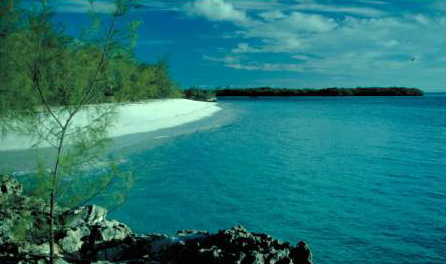New biosecurity project on Aldabra Atoll World Heritage Site
The Seychelles Islands Foundation has recently started a new project funded by the Indian Ocean Commission and European Union to improve biosecurity measures for Aldabra, entitled, ‘Institutionalisation and implementation of biosecurity measures to ensure sustainable conservation management of biodiversity on Aldabra Atoll’.

Photo: Jim Thorsell
Invasive alien species (IAS) have long been recognised as a major threat to biodiversity, in particular on islands. SIF has been actively addressing and researching IAS for several years under several projects which have led to eradications of key IAS, but to maintain the successful outcomes of these projects and ensure the protection of Aldabra it is essential to have strong biosecurity measures in place.
The term ‘biosecurity’ refers to all policies and measures that an authority implements to minimise the entry and spread of, and mitigate the harmful effects of invasive and pest species. Aldabra’s relatively undisturbed ecosystem and comparative lack of invasive species, makes the arrival and establishment of new invasive species the most serious threat to the biodiversity and ecological integrity of the atoll. A comprehensive biosecurity plan for Aldabra has already been developed, which includes a risk assessment, identification of invasive species pathways and an outlined step-wise approach to implement effective biosecurity measures for Aldabra at all levels.
The plan has been partially enacted, but full implementation has not been possible so far due to the additional time, investment and resources required. Currently SIF lacks the required infrastructure, materials, facilities, and related institutionalised procedures to conduct highly effective and essential biosecurity measures to protect Aldabra in the long-term, where invasive alien species could quickly become impossible to control and have irreversible negative impacts. The new project will help to mitigate these threats to Aldabra’s biodiversity and ecological integrity by strengthening biosecurity measures and infrastructure, addressing the pathways directly ‘on the ground’, creating an institutional framework by incorporating management and monitoring procedures, and creating biosecurity roles at Aldabra and in SIF Head Office.
The overall expected result of the project is the prevention of future invasive species introductions to Aldabra and substantially reduced threats from invasive alien species. Putting these measures in place is also an essential prerequisite for future eradications of IAS still occurring on Aldabra.



